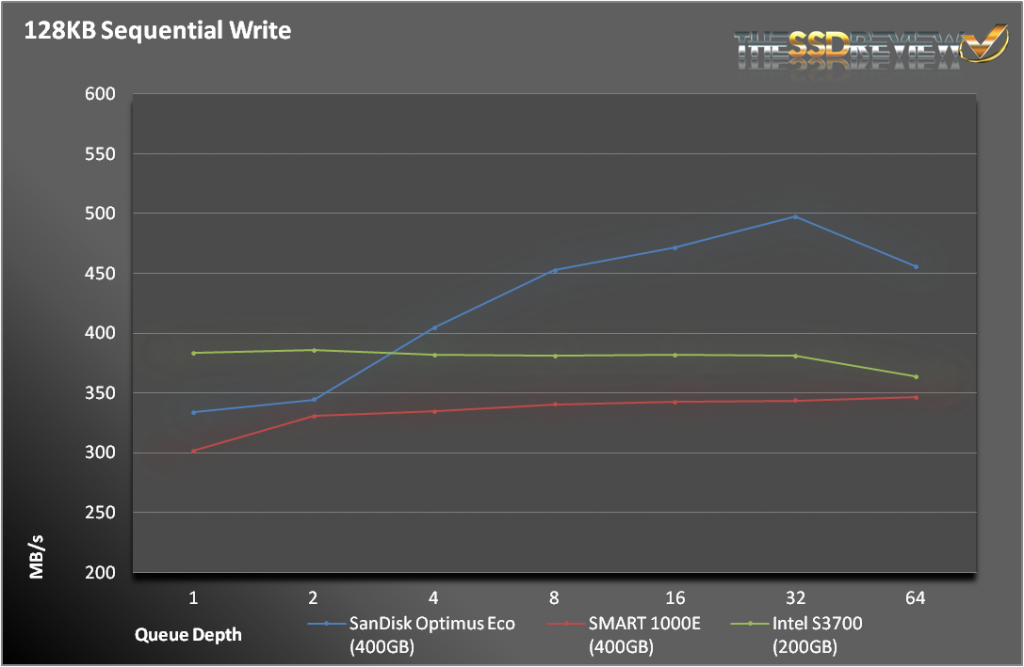MEASURING PERFORMANCE
As with all of our tests, the following tests were performed after a secure erase of the drive. The drive was also conditioned with a predefined workload until it reached steady state. We also test across the entire span of the drive.
In both of our sequential tests, the Optimus Eco came out on top when compared to the CloudSpeed 1000E and Intel S3700. While we couldn’t quite squeak out 500MB/s for sequential writes, we easily topped that number for read operations. Once again, we came away impressed.
For random write operations, the Optimus Eco achieved 35K IOPS at a relatively low queue depth of 8. Random read performance took a slightly higher queue depth to max out. Once we hit 32 outstanding IOs, the Optimus Eco was well into the 90K IOPS.
No matter how you look at it, the Optimus Eco is a beast when it comes to random and sequential performance, easily dispatching the competition.
SNIA IOPS TESTING
The Storage Networking Industry Association has an entire industry accepted performance test specification for solid state storage devices. Some of the tests are complicated to perform, but they allow us to look at some important performance metrics in a standard, objective way.
SNIA’s Performance Test Specification (PTS) includes IOPS testing, but it is much more comprehensive than just running 4KB writes with IOMeter. SNIA testing is more like a marathon than a sprint. In total, there are 25 rounds of tests, each lasting 56 minutes. Each round consists of 8 different block sizes (512 bytes through 1MB) and 7 different access patterns (100% reads to 100% writes). After 25 rounds are finished (just a bit longer than 23 hours), we record the average performance of 4 rounds after we enter steady state.
- Preconditioning: 3x capacity fill with 128K sequential writes
- Each round is composed of .5K, 4K, 8K, 16K, 32K, 64K, 128K, and 1MB accesses
- Each access size is run at 100%, 95%, 65%, 50%, 35%, 5%, and 0% Read/Write Mixes, each for one minute.
- The test is composed of 25 rounds (one round takes 56 minutes, 25 rounds = 1,400 minutes)
With our SNIA tests reinforced quite a bit of information. The first is that the random 4KB performance was no fluke. Even though the SNIA cycles between workloads, 4KB reads and writes easily met its specification. Once again, the Eco struggled with 512B write operations, which is a little odd.
Finally, we noticed that you don’t gain, or lose, much performance between 0% and 65% reads. You don’t seem to benefit much from the ridiculously high read IOPS until the mix hits 95%.
 The SSD Review The Worlds Dedicated SSD Education and Review Resource |
The SSD Review The Worlds Dedicated SSD Education and Review Resource | 

